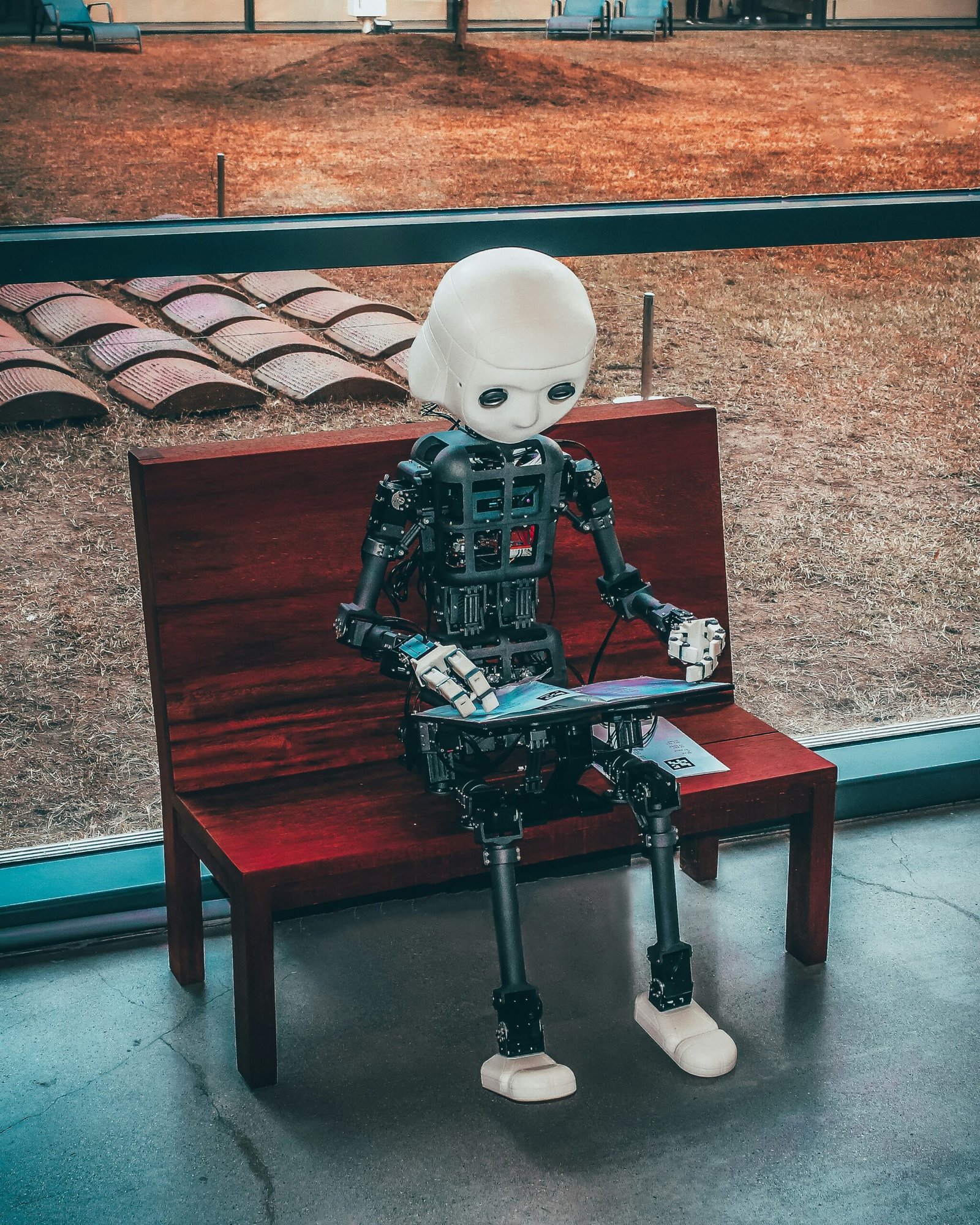Introduction
In recent years, advances in artificial intelligence (AI) and machine learning have transformed the digital landscape. One particularly intriguing and controversial application of AI is face-swapping. Face swapping involves the use of AI algorithms to digitally replace one person’s face with another in photos or videos. While this technology has opened up new possibilities for entertainment, creativity, and even professional applications, it also raises significant ethical and security concerns. In this blog, we will delve into the intricacies of face-swapping technology, its mechanisms, applications, and the considerable disadvantages that accompany its use.
The Mechanics of Face-Swapping Technology
How Face Swapping Works
Face-swapping technology relies on several AI and machine learning techniques, primarily those involving deep learning. The process generally involves the following steps:
- Face Detection and Alignment: The first step is detecting faces in the source and target images or videos. AI models, such as convolutional neural networks (CNNs), are trained to identify facial features accurately. Once detected, the faces are aligned to ensure that facial landmarks (e.g., eyes, nose, mouth) match between the source and target.
- Feature Extraction: In this step, the algorithm extracts critical features of the faces, capturing unique characteristics that define an individual’s appearance. This often involves creating a facial representation using techniques like facial landmark detection and encoding these features into a vector space.
- Face Mapping: The extracted features from the source face are mapped onto the target face. This involves complex transformations to ensure that expressions, lighting, and perspective are realistically adjusted.
- Image Synthesis: Finally, the AI generates the new image or video, blending the source face onto the target. Generative adversarial networks (GANs) are frequently used for this purpose, as they can create highly realistic outputs by training a generator network to produce convincing images and a discriminator network to differentiate between real and fake images.
Key Technologies Behind Face Swapping
- Generative Adversarial Networks (GANs): GANs consist of two neural networks, the generator and the discriminator, that work together in a feedback loop. The generator creates synthetic images, while the discriminator evaluates their authenticity. Through this iterative process, GANs can produce highly realistic images and videos.
- Autoencoders: These are neural networks used for unsupervised learning, where the goal is to learn a compressed representation of the input data (encoding) and then reconstruct the data from this representation (decoding). In face swapping, autoencoders can help in encoding facial features and reconstructing them onto different identities.
- Convolutional Neural Networks (CNNs): CNNs are particularly effective for image recognition tasks, making them essential for detecting and aligning faces. They consist of multiple layers that automatically and adaptively learn spatial hierarchies of features from input images.
Applications of Face Swapping
Entertainment and Media
One of the most popular applications of face swapping is in entertainment and media. Apps like Snapchat and TikTok have popularized face-swapping filters, allowing users to create funny and engaging content by swapping faces with friends, celebrities, or fictional characters. This technology is also used in movies and TV shows to create special effects, allowing actors to play multiple roles or to de-age characters.
Social Media and Personal Use
Face-swapping apps for personal use have proliferated, enabling users to swap faces in their photos and videos for amusement or artistic purposes. This has given rise to a new form of digital expression and creativity, as users experiment with various face swaps to create humorous or surreal content.
Professional and Commercial Use
In the professional realm, face-swapping has practical applications in marketing, advertising, and customer service. For instance, companies can create personalized advertisements where a customer’s face is swapped into a promotional video, enhancing engagement and personalization. In customer service, face-swapping technology can be used for virtual avatars, creating a more human-like interaction in chatbots and virtual assistants.
The Disadvantages of Face-Swapping Technology
While face-swapping technology offers exciting possibilities, it also comes with several significant disadvantages that cannot be overlooked. These include ethical concerns, security risks, psychological impacts, and broader societal implications.
Ethical Concerns
- Consent and Privacy: One of the primary ethical issues is the lack of consent. Individuals’ faces can be swapped without their permission, leading to privacy violations. This is particularly problematic when the swapped content is used in a way that can cause harm or embarrassment to the individuals involved.
- Misinformation and Deception: Face-swapping technology can be used to create deepfakes—hyper-realistic but fake videos or images. These can be used to spread misinformation, manipulate public opinion, or create fraudulent content. For example, deepfakes of politicians or public figures can be used to falsely attribute statements or actions to them, undermining trust and spreading false information.
- Intellectual Property: There are also concerns regarding the use of celebrities’ faces in face-swapped content. Using the likeness of famous personalities without authorization can lead to legal disputes over intellectual property rights and the exploitation of an individual’s image for commercial gain without their consent.
Security Risks
- Identity Theft: Face swapping can be exploited for identity theft. By creating convincing deepfakes, malicious actors can impersonate individuals to gain unauthorized access to secure systems, financial accounts, or sensitive information.
- Blackmail and Extortion: Deepfakes created through face swapping can be used for malicious purposes such as blackmail and extortion. For instance, creating compromising or false content featuring an individual can be leveraged to demand money or favours under the threat of public release.
- Cybersecurity Threats: The proliferation of deepfake technology poses a broader cybersecurity threat. As deepfakes become more sophisticated, they can be used in social engineering attacks, where attackers deceive individuals into divulging confidential information or performing actions that compromise security.
Psychological and Social Impacts
- Mental Health: The ability to create realistic face-swapped content can lead to psychological distress for individuals targeted by deepfakes. Victims of malicious face-swapping may experience anxiety, depression, and a sense of violation and helplessness.
- Trust Erosion: As face-swapping and deepfake technologies become more widespread, they can erode trust in digital media. People may become increasingly sceptical of the authenticity of videos and images, undermining the credibility of genuine content and sources of information.
- Social Relationships: The misuse of face-swapping can also damage personal relationships. For instance, fake videos or photos involving individuals in compromising situations can lead to misunderstandings, conflicts, and even the breakdown of relationships.
Legal and Regulatory Challenges
- Lack of Regulation: The rapid advancement of face-swapping technology has outpaced the development of legal and regulatory frameworks. There is currently a lack of comprehensive laws addressing the creation and distribution of deepfakes and face-swapped content, leaving victims with limited recourse for protection or compensation.
- Jurisdictional Issues: The global nature of the internet complicates the enforcement of laws related to face-swapping and deepfakes. Content created in one jurisdiction can easily be distributed and accessed worldwide, making it challenging to address legal violations across borders.
- Evidentiary Concerns: In legal contexts, the existence of convincing deepfakes raises concerns about the reliability of digital evidence. Courts may need to develop new standards and methods for verifying the authenticity of digital content presented as evidence.
Mitigating the Disadvantages of Face-Swapping Technology
Given the significant disadvantages associated with face-swapping technology, it is essential to explore ways to mitigate these risks. This involves a combination of technological, legal, and societal approaches.
Technological Solutions
- Deepfake Detection Tools: Developing advanced AI-based tools to detect deepfakes is crucial. These tools can analyze digital content for signs of manipulation, such as inconsistencies in facial movements, lighting, and other subtle artefacts. Companies like Facebook and Google are already investing in deepfake detection technology.
- Watermarking and Provenance Tracking: Implementing digital watermarking and provenance tracking for authentic media can help verify the origin and integrity of images and videos. Blockchain technology can be used to create immutable records of digital content, ensuring that any alterations can be detected.
- User Education and Awareness: Educating the public about the existence and potential risks of face-swapping and deepfake technologies can help individuals become more discerning consumers of digital content. Awareness campaigns can teach people how to recognize manipulated media and the importance of verifying sources.
Legal and Regulatory Measures
- Stronger Legislation: Governments need to develop and enforce robust laws that address the creation and distribution of deepfakes and face-swapped content. Legislation should include penalties for malicious use and protections for victims of non-consensual face swapping.
- International Cooperation: Given the global nature of digital media, international cooperation is essential to effectively combat the spread of harmful face-swapped content. Countries should collaborate on developing standardized regulations and sharing best practices for enforcement.
- Rights to Digital Identity: Establishing legal rights to digital identity can empower individuals to control the use of their likenesses. This could include requiring explicit consent for the use of one’s face in digital content and providing legal avenues for recourse if these rights are violated.
Societal and Ethical Considerations
- Ethical AI Development: Developers of face-swapping and related technologies should adhere to ethical guidelines that prioritize user consent, privacy, and the prevention of misuse. Companies should implement safeguards to prevent the malicious use of their technologies.
- Media Literacy: Promoting media literacy in educational curricula can help individuals of all ages develop critical thinking skills regarding digital content. Teaching people how to analyze and question the authenticity of what they see online can reduce the impact of deceptive media.
- **Support for Victims**: Providing support services for victims of malicious face swapping and deepfakes is crucial. This can include legal assistance, psychological support, and resources for removing harmful content from the internet.
Conclusion
Face-swapping technology, powered by advances in AI and machine learning, represents a fascinating yet double-edged sword in the digital age. While it offers exciting opportunities for creativity, entertainment, and professional applications, the significant disadvantages it poses cannot be ignored. Ethical concerns, security risks, psychological impacts, and legal challenges underscore the need for a balanced approach that maximizes the benefits of face-swapping technology while mitigating its harms.
As society continues to navigate the complexities of digital innovation, it is essential to foster a collaborative effort among technologists, lawmakers, educators, and the public to ensure that the use of face-swapping technology aligns with ethical standards and contributes positively to the digital landscape. Only through such concerted efforts can we harness the potential of AI-driven face-swapping while safeguarding individuals and society from its adverse effects.

